Automated Perfusion System for Calcium Imaging
Control solution exchange in real-time calcium imaging experiments
Real-time monitoring
Track immediate cellular responses to calcium changes
Sequential compound delivery
Introduce reagents in a controlled sequence
Minimal sample disturbance
Maintain cell viability with gentle handling
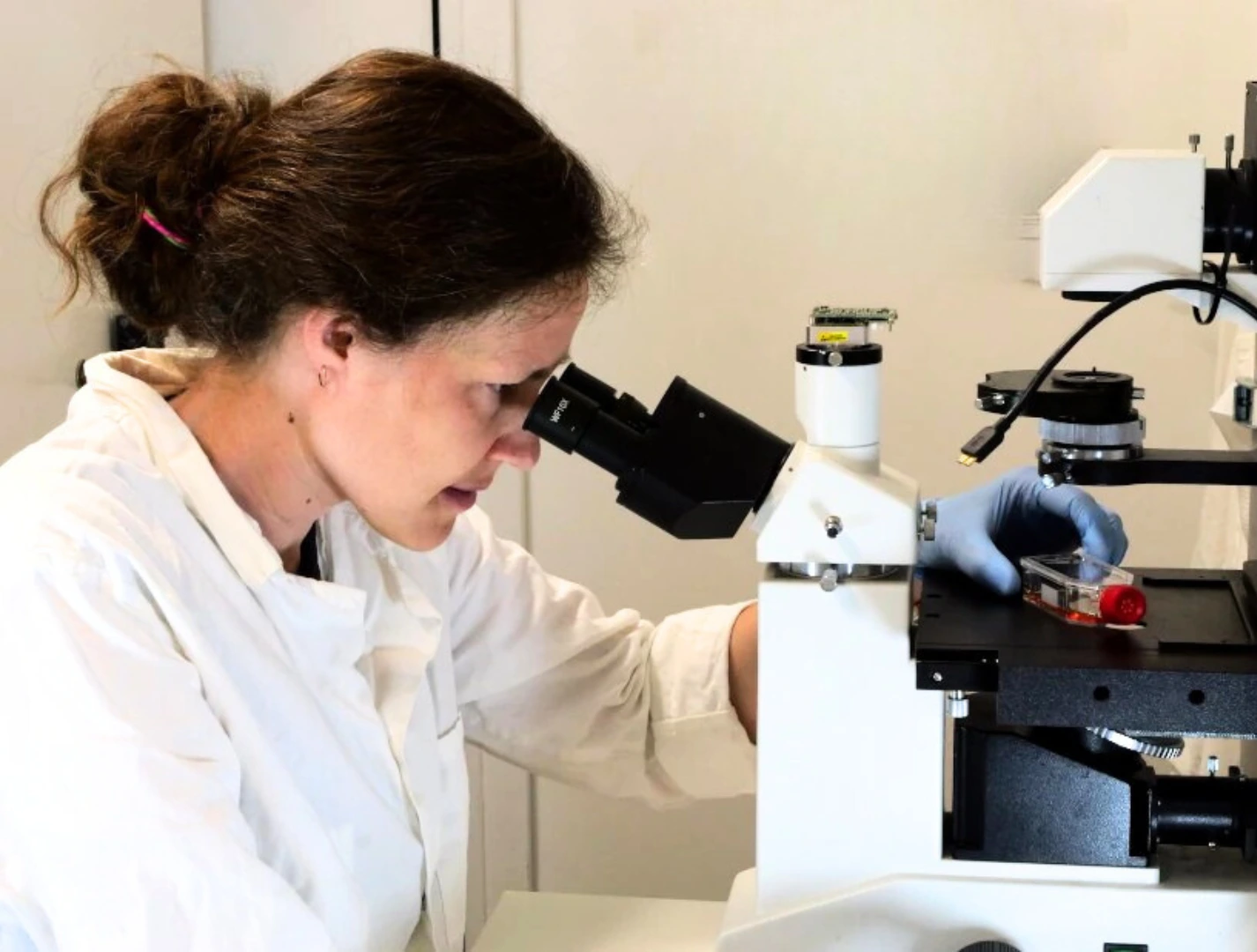
Need a microfluidic SME partner for your Horizon Europe project?
How our solution enhances calcium imaging
In live-cell calcium imaging experiments, timing is crucial when introducing different solutions to observe intracellular calcium flux. Manual switching introduces inconsistencies that can distort results and compromise data accuracy [1].
Our microfluidic-based automated perfusion system eliminates this problem by delivering precisely controlled calcium influx and efflux cycles.
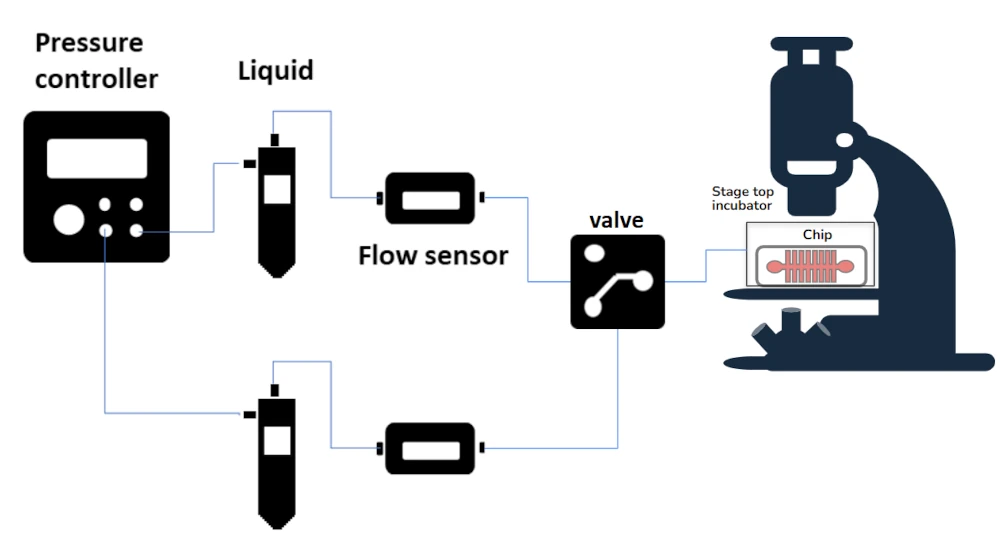
Researchers can study real-time calcium signaling in immune cells, neurons, and cardiac tissues with improved accuracy [2]. The system is also ideal for high-throughput screenings of calcium channel blockers and other drugs, facilitating drug discovery and pharmacological research [3].
In addition, it maintains controlled microenvironments for long-term imaging experiments, ensuring optimal cell viability. By eliminating timing discrepancies, this system enhances reproducibility across experiments, leading to more consistent and reliable data [4].
This system also prevents sample contamination and minimizes reagent waste, making it a cost-effective and high-precision solution for laboratories working on calcium imaging [5].
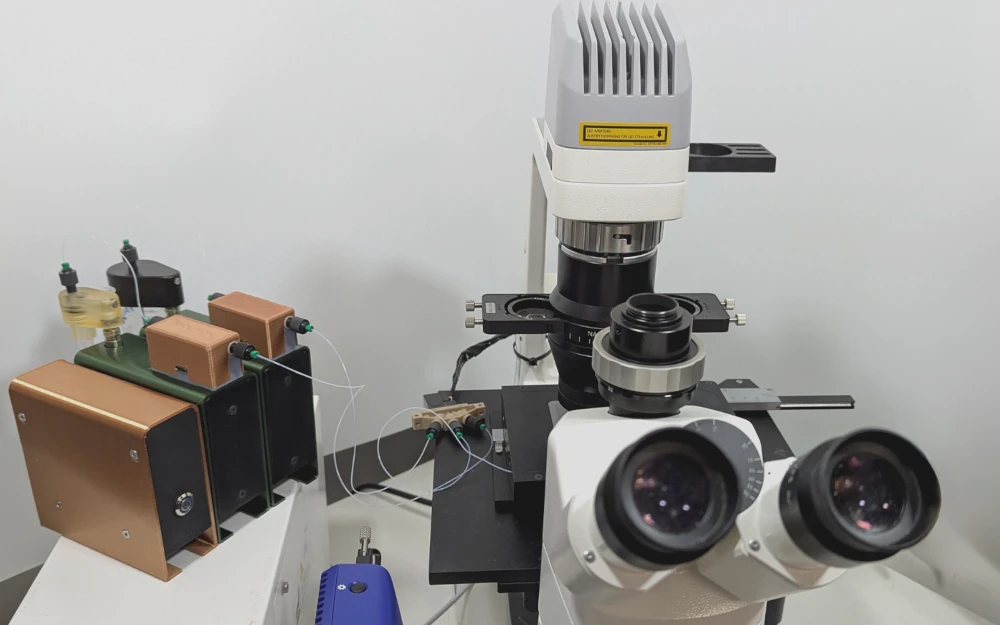
References
Zhang, Y., et al. (2023). A Programmable Microfluidic Platform to Monitor Calcium Dynamics in Microglia during Inflammation.
Taylor, A. M., et al. (2005). A microfluidic culture platform for CNS axonal injury, regeneration and transport.
Van der Linden, A., et al. (2006). High-throughput screening for N-type calcium channel blockers using a scintillation proximity assay.
Whitesides, G. M. (2006). The origins and the future of microfluidics.
Sigma-Aldrich. (n.d.). Live Cell Imaging Analysis.
Other applications
Our automated perfusion system is not limited to calcium imaging- it can also be used in:
- Electrophysiology studies for ion channel research
- Neuroscience experiments requiring controlled neurotransmitter applications
- Cardiovascular research for studying calcium-driven cardiac contractions
- T-cell activation and immune response studies in microfluidic environments
- And many more!
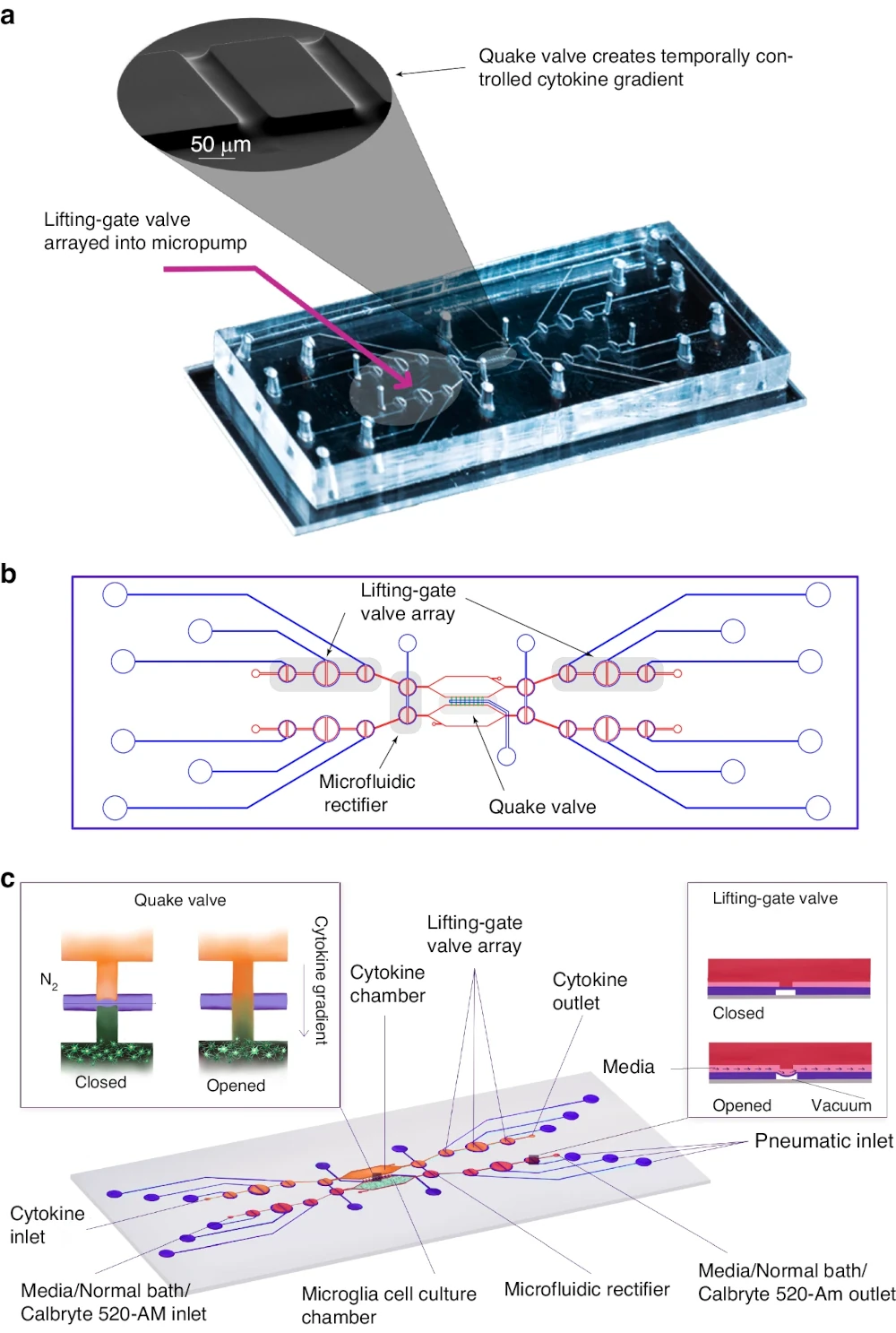
Calcium imaging in microfluidic systems: This figure illustrates a microfluidic platform designed for high-throughput calcium imaging of neuronal activity. Such systems enable precise environmental control and real-time observation of intracellular calcium dynamics, which are crucial for understanding neural responses. The integration of microfluidics with advanced imaging techniques exemplifies the growing potential of lab-on-a-chip platforms in neuroscience research.
References
Image :
Ma, Y., Li, J., Zhu, J. et al. A high-throughput microfluidic platform for calcium imaging of 3D neuronal cultures. Microsystems & Nanoengineering 10, 33 (2024).
Perfusion pump technical specifications for Calcium imaging
| Pressure control | |
|---|---|
| Pressure range | -400 to 600 mbar |
| Pressure stability | 0.2 mbar |
| Air flow rate | 0.1L/min at atmospheric pressure Possibility to work with higher air flow rates by reducing the pressure range |
| Flow control | |
| Microfluidic flow sensor | Monitoring and feedback loop flow control available |
| Flow rates | From 0.1 µL/min to 5 mL/min |
Stage top Incubator specifications for Calcium imaging
| Characteristics | Specifications |
|---|---|
| Dimensions (mm) | 30.5 x 130 x 168 (h x w x l) |
| Base K- Frame | 3.5 x 110 x 160 (h x w x l) |
| Dimensions of internal usable space | 25 x 89 x 130 (h x w x l) |
| Dimensions of the bottom glass (ITO glass) | 1) 72 x 110 with a thickness of 1.1 mm 2) 50 x 25 with a thickness of 0.6mm 3) 50 x 22 with a thickness of 0.12 mm |
| Temperature range | Room Temperature to 70 °C |
| Temperature accuracy | ± 0,5 °C |
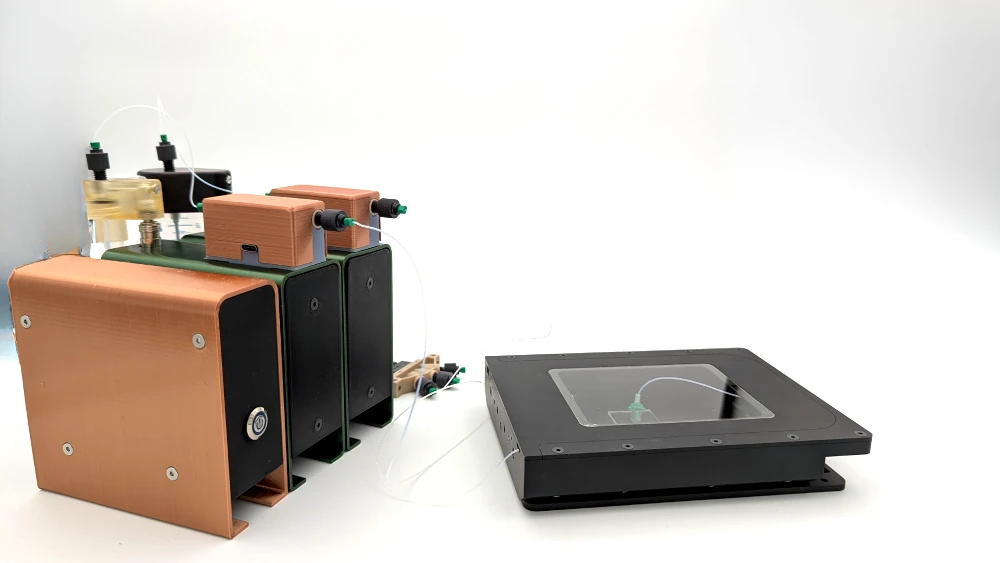
Frequently asked questions
Can the solution exchange timing be adjusted?
Yes, the system allows full customization of perfusion timing to match your experimental protocol.
Is this system compatible with existing microscopes?
The stage top incubator fits a k-frame microscope.
Can it be used for drug testing?
Absolutely. The system is ideal for high-throughput screening of calcium-modulating compounds.
How can we help your experiment?
This pack is in beta testing phase. So, although the instruments are not fully industrialized, we can provide extensive support as part of our beta testing program. Get in touch to see if you are eligible.



